Entry Database : PDB / ID : 3ktpTitle Structural basis of GW182 recognition by poly(A)-binding protein Polyadenylate-binding protein 1 Trinucleotide repeat-containing gene 6C protein Keywords / / / / / / / / / / Function / homology Function Domain/homology Component
/ / / / / / / / / / / / / / / / / / / / / / / / / / / / / / / / / / / / / / / / / / / / / / / / / / / / / / / / / / / / / / / / / / / / / / / / / / / / / / / / / / / / / / / / / / / / / / / / / / / / / / / / / / / / / / / / / / Biological species Homo sapiens (human)Method / / / Resolution : 1.5 Å Authors Kozlov, G. / Gehring, K. Journal : J.Biol.Chem. / Year : 2010Title : Structural basis of binding of P-body-associated proteins GW182 and ataxin-2 by the Mlle domain of poly(A)-binding protein.Authors : Kozlov, G. / Safaee, N. / Rosenauer, A. / Gehring, K. History Deposition Nov 25, 2009 Deposition site / Processing site Revision 1.0 Feb 23, 2010 Provider / Type Revision 1.1 Jul 13, 2011 Group / Version format complianceRevision 1.2 Sep 6, 2023 Group / Database references / Refinement descriptionCategory chem_comp_atom / chem_comp_bond ... chem_comp_atom / chem_comp_bond / database_2 / pdbx_initial_refinement_model / struct_ref_seq_dif Item / _database_2.pdbx_database_accession / _struct_ref_seq_dif.details
Show all Show less
 Open data
Open data Basic information
Basic information Components
Components Keywords
Keywords Function and homology information
Function and homology information Homo sapiens (human)
Homo sapiens (human) X-RAY DIFFRACTION /
X-RAY DIFFRACTION /  SYNCHROTRON /
SYNCHROTRON /  MOLECULAR REPLACEMENT / Resolution: 1.5 Å
MOLECULAR REPLACEMENT / Resolution: 1.5 Å  Authors
Authors Citation
Citation Journal: J.Biol.Chem. / Year: 2010
Journal: J.Biol.Chem. / Year: 2010 Structure visualization
Structure visualization Molmil
Molmil Jmol/JSmol
Jmol/JSmol Downloads & links
Downloads & links Download
Download 3ktp.cif.gz
3ktp.cif.gz PDBx/mmCIF format
PDBx/mmCIF format pdb3ktp.ent.gz
pdb3ktp.ent.gz PDB format
PDB format 3ktp.json.gz
3ktp.json.gz PDBx/mmJSON format
PDBx/mmJSON format Other downloads
Other downloads https://data.pdbj.org/pub/pdb/validation_reports/kt/3ktp
https://data.pdbj.org/pub/pdb/validation_reports/kt/3ktp ftp://data.pdbj.org/pub/pdb/validation_reports/kt/3ktp
ftp://data.pdbj.org/pub/pdb/validation_reports/kt/3ktp

 Links
Links Assembly
Assembly
 Components
Components Homo sapiens (human) / Gene: PABPC1, PAB1, PABP1, PABPC2 / Plasmid: pGEX-6P-1 / Production host:
Homo sapiens (human) / Gene: PABPC1, PAB1, PABP1, PABPC2 / Plasmid: pGEX-6P-1 / Production host: 
 Homo sapiens (human) / References: UniProt: Q9HCJ0
Homo sapiens (human) / References: UniProt: Q9HCJ0 X-RAY DIFFRACTION / Number of used crystals: 1
X-RAY DIFFRACTION / Number of used crystals: 1  Sample preparation
Sample preparation SYNCHROTRON / Site:
SYNCHROTRON / Site:  CHESS
CHESS  / Beamline: A1 / Wavelength: 0.978 Å
/ Beamline: A1 / Wavelength: 0.978 Å Processing
Processing MOLECULAR REPLACEMENT
MOLECULAR REPLACEMENT Movie
Movie Controller
Controller



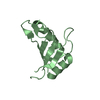

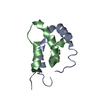

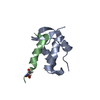
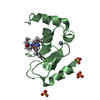

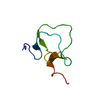
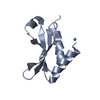

 PDBj
PDBj



















